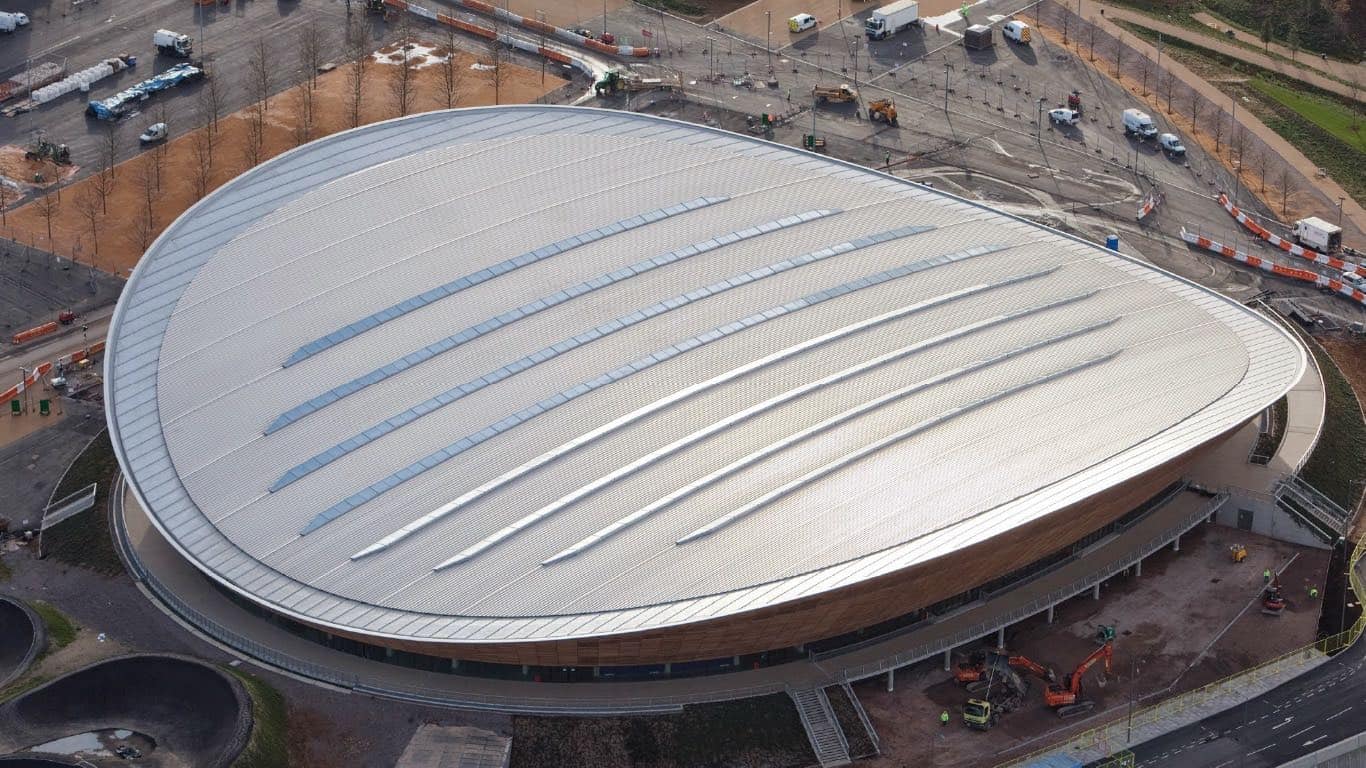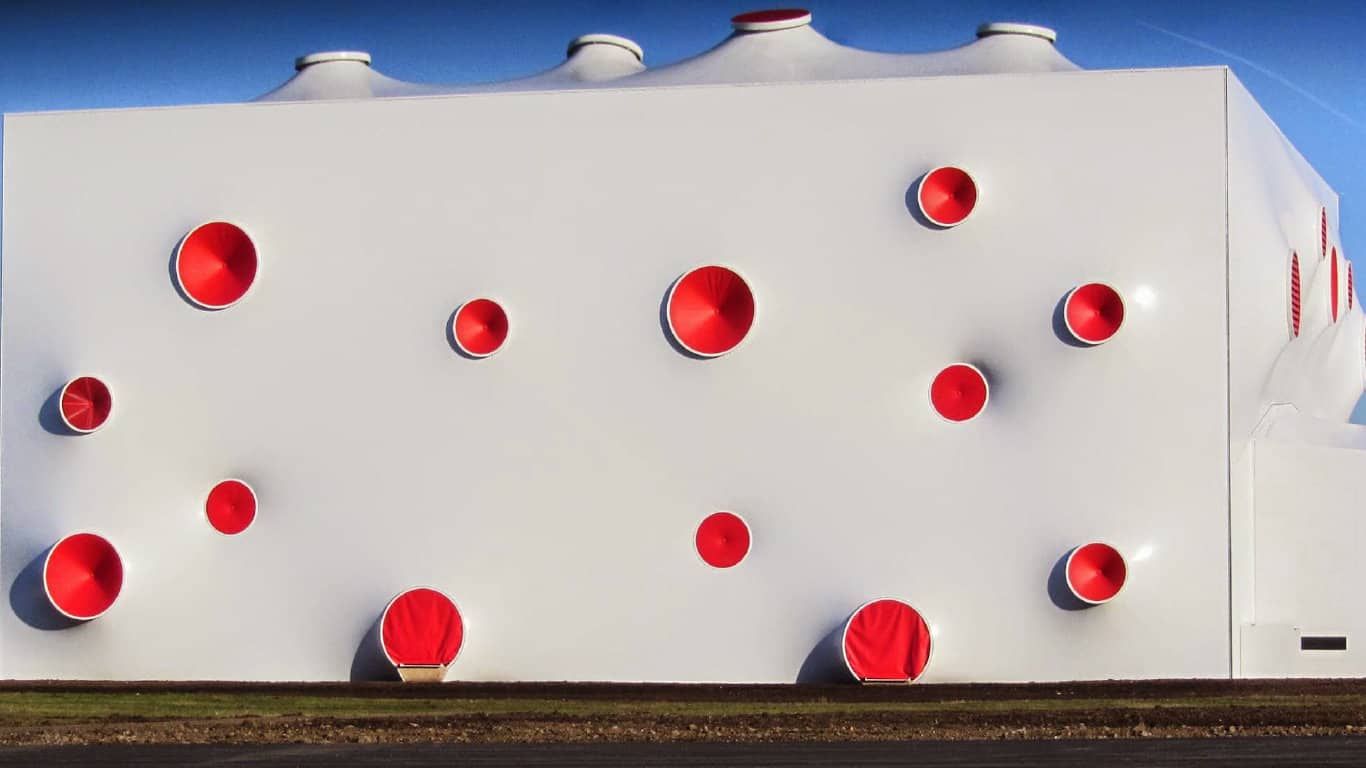PVC at the 2012 London Olympics
The importance of PVC selection for major sporting events
Construction projects associated with major sporting events – such as the Olympic Games or the FIFA World Cup – have a huge influence on public and private construction projects for many years to come. Making sure that PVC products are specified for such high profile events is crucial in order to set a positive precedent for future procurement.
The organisers of the Sydney Olympics in 2000 set out policies to avoid the use of PVC in response to pressure from environmental groups. However, this discriminatory stance was not subsequently adopted at the Games in Athens and Beijing.

Velodrome (Image © London Organising Committee)

Shooting range (Image © London Organising Committee)

Olympic stadium (Image © London Organising Committee)
The London Olympics policy
In 2007, the Commission for Sustainable London 2012 highlighted the need for London 2012 to adopt a policy on its use of PVC. VinylPlus, via the British Plastics Federation, was engaged in conversation with London authorities so as to explain how the industry operates its sustainability programme. The London 2012 Sustainability Group published its policy in early 2009, recognising the potential scale of PVC required by London 2012, from membrane wraps to flooring, cabling and pipework. The policy set out parameters for using PVC including requirements for the manufacture and disposal of the material.
The policy objective was to stimulate the supply chain in adopting innovative methods that provide environmental benefits, taking into account the whole life cycle of the product. The policy also recognised that there were certain functional requirements for which PVC is the most appropriate material (e.g. cabling). The Olympic Delivery Authority (ODA) defined the following selection criteria for PVC:
- Compliance with the ECVM Industry Charter.
- Production with no discharges or vent gases exceeding European Union (EU) standards.
- Freedom from heavy metals in non-recycled content.
- Preference for at least 30% recycled content unless precluded by performance requirements.
- Preference for non-phthalate plasticisers.
- All substance used registered or pre-registered under REACH.
- Existence of a take back scheme offering closed loop reuse or recycling.
- Regarding the use of phthalates, the ODA ultimately recognised that they should differentiate between high and low molecular weight phthalates. High molecular weight phthalates were ultimately used in many products at London 2012.
PVC applications
Over 140,000 square meters of PVC were used at the London Olympics, mostly in applications such as:
- Tensile fabric structures
- Cables
- Pipes
- High performance sports surfaces and seating
Lessons learned
After the Games, and as part of the ‘Learning Legacy’ series, the Olympic Delivery Authority published a comprehensive document entitled “Lessons learned from the London 2012 Games construction project” analysing the implementation of its PVC policy. The main conclusions included:
- Phthalate free fabric had a 15 per cent cost uplift compared to phthalate containing fabrics.
- The policy focused on the use of PVC across projects and highlighted that the functional properties of PVC make it the most appropriate material in certain circumstances.
- High molecular phthalates play a role in creating a longer lifespan for certain products. This includes lift shaft cables, where there is no better alternative.
- In some cases, PVC is the only solution due to Health and Safety reasons. The plastics industry broadly welcomed the approach. The policy recognised the industry’s voluntary code, Vinyl 2010, and thereby validated products which were meeting this code.
- The policy was fairly stark in its treatment of phthalates. The industry has consistently advised that there are a range of different phthalates with variable properties and environmental and health effects. The ODA realised that this should have been recognised in the policy.
- Finally, the policy did not recognise the potential wider environmental effects of using certain products. Certain products had higher whole life costs and impacts when considering the manufacturing, shipping, fabrication, and installation costs and impacts. The Olympic Delivery Authority for the London Olympics clearly stated that “the whole life cycle of the products needs to be considered. Some PVC based components are more suitable for installation than non-PVC. More attention needs to be applied to the reengineering option, which should be considered before returning the product to source for chemical recycling.”
